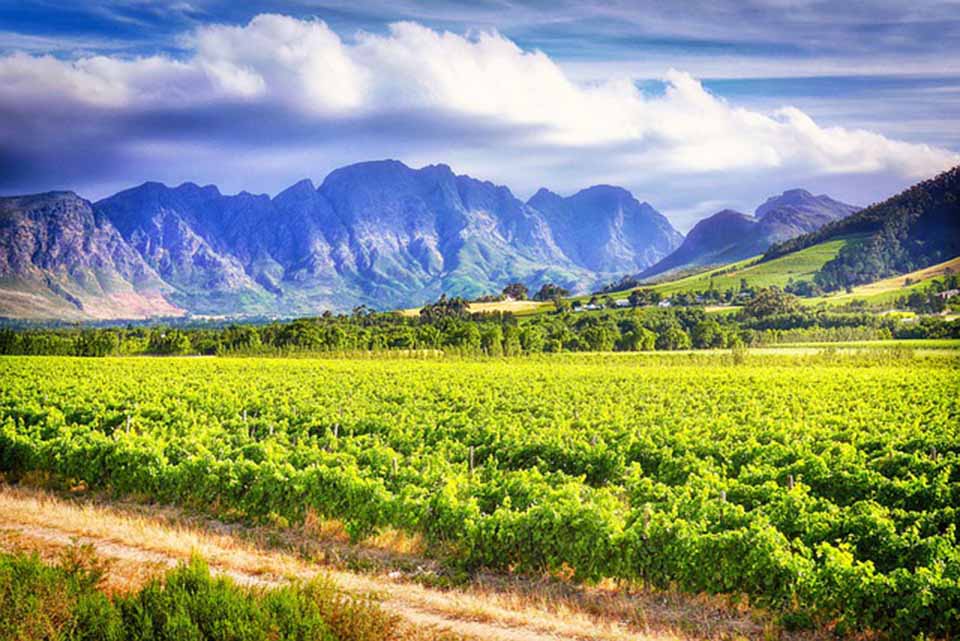
You may have noticed advertisements for a new local wine outlet called Vines to Vino. A couple of weeks ago, I called in at their shop (open 11:00-14:00 except Mondays) which is next door to the Pattaya Mail offices. It’s that soi that runs parallel to Thepprasit Road just up from what the locals call Soi Daeng-Dum. The owner and manager of Vines to Vino is a pleasant and affable New Zealander called Raymond Whitley whose company offers a selection of over five hundred wines. I was pleased to see several French wines in stock, including some examples from Bordeaux and Beaujolais and an excellent Gewürztraminer from Alsace. But Raymond was anxious that I try a Pinotage from Rhanleigh Wines of South Africa.
Unless you are familiar with South African wine, you might not recognise the name Pinotage, the country’s signature grape. The grape was created (yes, created) in 1925 by Professor Abraham Izak Perold, a scientist who was the Professor of Viticulture at the University of Stellenbosch. He’d noticed that Pinot Noir grapes struggled in the hot local climate and felt that by crossing it with a hardier variety might solve the problem. The Pinot was crossed with the heat-tolerant Cinsault (SAN-soh) grape from southern France. The grape was known as Hermitage in South Africa and the new variety, which turned out to be an blue-black colour, was given the portmanteau name Pinotage (pee-noh-TAHJ).
You might be surprised to know that several grape varieties are crosses, hybrids or clones. We don’t need to try and unravel the differences between them because it gets a bit technical and I can sense your eyes glazing over already. The important thing is that these human-made varieties are bred with specific intentions such as immunity to vineyard pests and disease or to improve flavour, colour or grape yield. The University of California, Davis has already developed new disease-resistant varieties aimed to reduce the cost of vineyard spraying or replanting. Climate change too has forced the development of new varieties which can tolerate higher temperatures.
In a sense, all grapes are crosses because cross-pollination occurs naturally in the vineyard, producing almost identical clones of the same variety. It was not until 1996 that DNA evidence revealed that Cabernet Sauvignon, one of the world’s most popular grapes is the offspring of Cabernet Franc and Sauvignon Blanc – a natural chance crossing that occurred sometime during the 17th century.
One of the earliest human successes at producing a new grape variety was the Müller-Thurgau, created in 1882. It’s a cross between Riesling and Madeleine Royale and today it’s grown all over Europe. In Germany it’s used to make Liebfraumilch and other undistinguished whites. The Scheurebe was created in Germany in 1916 by crossing Riesling and Bukettrebe in an attempt to produce a grape that could resist frost. And I mustn’t forget the Austrian Zweigelt grape, created in 1922 by Friedrich Zweigelt who, with touching modesty named it after himself.
Although Pinotage thrived in South Africa’s sunny vineyards, making it into drinkable wine proved a challenge. Partly for this reason, it fell into oblivion for decades and wasn’t revived until the middle of the 20th century. I well remember tasting Pinotage in the Old Country back in the 1970s. It was a novelty at the time – a rustic and tannic red that sometimes carried the faint aroma of nail polish remover or burnt rubber. But things have moved on. Several South African wineries are now producing high quality Pinotage, some of which have exceptional aromas and flavours. Here’s one of them.
Rhanleigh Pinotage 2020 (red), South Africa (Bt 499 + tax @ Vines to Vino)
Although its history can be traced back to 1659, it was not until the 20th century that South African wine achieved recognition. Rhanleigh Winery is in the hilly Western Cape Province, between the modest towns of Robertson and Ashton. The company produces a range of popular varietals and this one is an inky dark red wine with bluish hints. The first sniff might remind you of Shiraz. After a bit more nosing, you’ll find quite a complex aroma with brambles, gooseberries, a touch of pepper and black jammy fruit. There might even also be a hint of ripe banana, but I’ll leave you to decide that for yourself. I was expecting a heavy, full bodied wine but this is pleasantly medium-bodied, with restrained sweetish fruit and a mouth-feel which is remarkably soft and supple. It’s a pleasant, glugger with a satisfying dryness, gentle grainy tannins and a longish dry finish. It benefits from a bit of aeration and after fifteen minutes, the texture was noticeably softer. The label states that the alcohol content is 14.5% ABV which is near the top of the tree for table wines. To me it seemed quite a bit higher, especially after a couple of glasses. And of course, wine can legally be up to 1.5% higher than what the label claims.
Pinotage is a good partner for dishes that feature red meat or game. It can go well with kebabs, pork chops, burgers and strong-flavoured cheese, but its assertive nature overwhelms light and delicate dishes. Raymond mentioned that this is one their best-selling wines. Not surprising really, for it’s easy on the palate and sure to make many more new friends.





